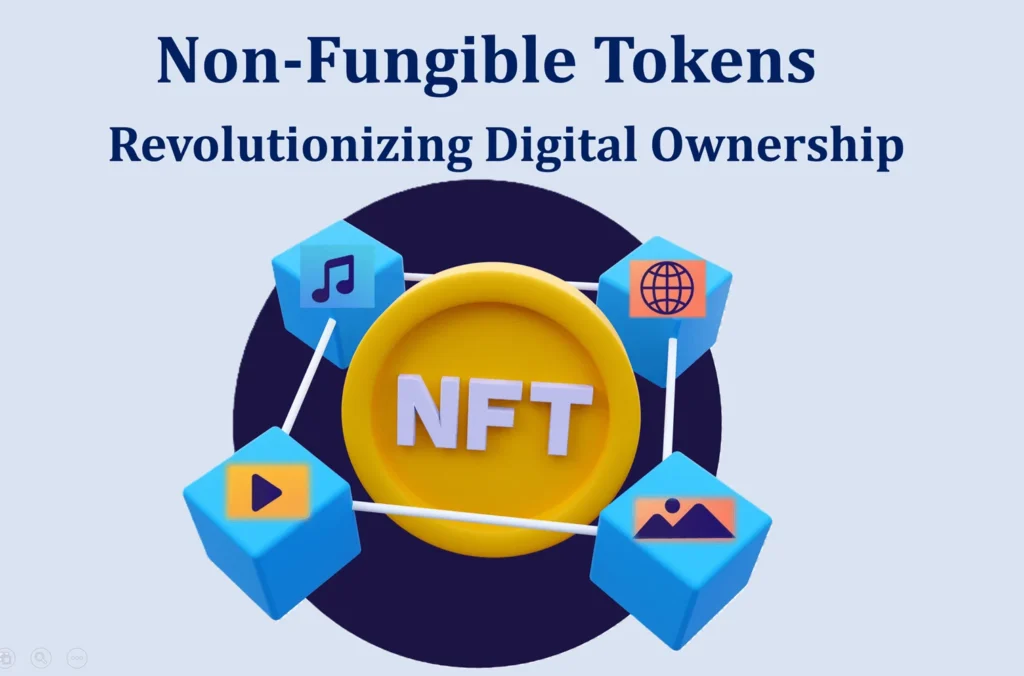
Introduction to Non-Fungible Tokens (NFTs)
Imagine a world where everything you possess is distinctive and one of a kind unlike anything. That’s what Non-Fungible Tokens represent in the realm of blockchain and assets. These tokens aren’t ordinary. They hold uniqueness because each one is completely distinct and cannot be interchanged with another token as regular ones can. To fully understand them it’s important to grasp the idea of “fungibility”, which means that objects can be easily replaced or are identical to one another. However, NFTs challenge this concept, by being genuinely unique. Thats what makes them so fascinating.
Concept of Fungibility
In finance, fungibility pertains to the characteristics of assets. For example, conventional currencies such, as the US dollar or Indian Rupee are deemed fungible because each unit is indistinguishable and can be swapped with another without any variation in worth. Likewise, cryptocurrencies, like Bitcoin or Ethereum also possess fungibility as each unit can be interchanged with another while retaining its value.
Defining Non-Fungible Tokens
Non-fungible tokens represent something one of a kind. They are assets stored and traded on networks ensuring security and immutability. Each NFT possesses information that sets it apart from tokens, such as artwork, collectibles or even virtual real estate. This uniqueness and individuality make NFTs revolutionary in the world of ownership.
Differentiating NFTs from Cryptocurrencies
Despite being built on technology, like cryptocurrencies they serve a purpose. Cryptocurrencies are primarily intended to be used as a means of exchanging goods or storing value whereas they have a purpose of representing ownership or providing evidence of authenticity for an asset. Essentially NFTs bring about a transformation, in our understanding and establishment of ownership, within the domain.
Differentiating NFTs from Fungible Tokens
Fungible tokens and non-fungible tokens are two kinds of tokens that possess unique qualities and serve specific purposes.
Fungible Tokens
- Exchangeability: Fungible tokens are completely identical. Can be freely exchanged with one another without any difference, in value. For example, you may trade one Bitcoin for another if you own one. They will hold the same value.
- Divisibility: Fungible tokens can be divided into units. For example, cryptocurrencies such as Bitcoin or Ethereum can be divided into fractions like Satoshi for Bitcoin and Wei for Ethereum.
- Indistinguishable Units: Each unit of a token is indistinguishable from any unit of the same type. They lack identifying characteristics.
- Standardized Value: Due to their interchangeability fungible tokens are often used as a medium of exchange. They serve as a currency or commodity where each unit carries the value as any other unit of the same kind.
- Examples: Cryptocurrencies like Bitcoin (BTC), Ethereum (ETH), and stablecoins like Tether (USDT) are a few popular examples of tokens.
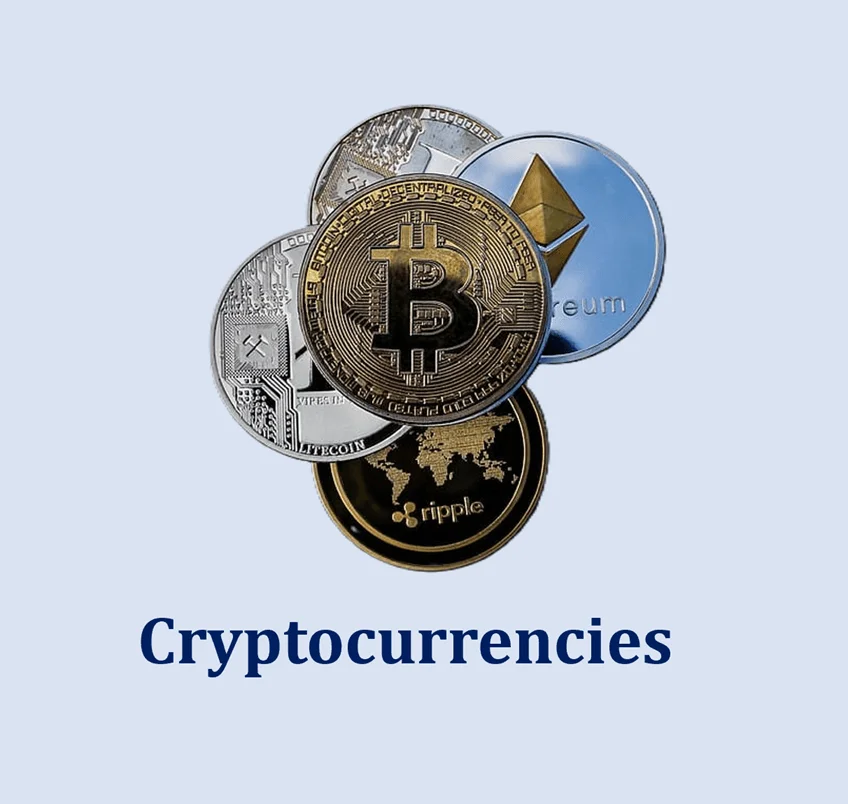
Non-Fungible Tokens
- Uniqueness: They are assets that’re one of a kind. Each token possesses its set of characteristics. Cannot be duplicated or swapped on a one-to-one basis with another token. They can represent things like art, collectibles or other individual assets.
- Indivisibility: Unlike tokens they cannot be divided into units. Each NFT is an entity. Cannot be fragmented into smaller parts.
- Ownership and Rarity: They serve the purpose of proving ownership and authenticity of physical assets. They contain metadata that sets them apart from one another creating a sense of scarcity and rarity that contributes to their value.
- Diverse Applications: NFTs find utility in fields such as art, gaming, digital collectibles, virtual real estate, music, videos or more where uniqueness, ownership rights and item origin are factors.
- Examples: Some examples of NFTs include CryptoKitties (cat collectibles) Decentraland parcels (land plots) digital artworks created by artists online.
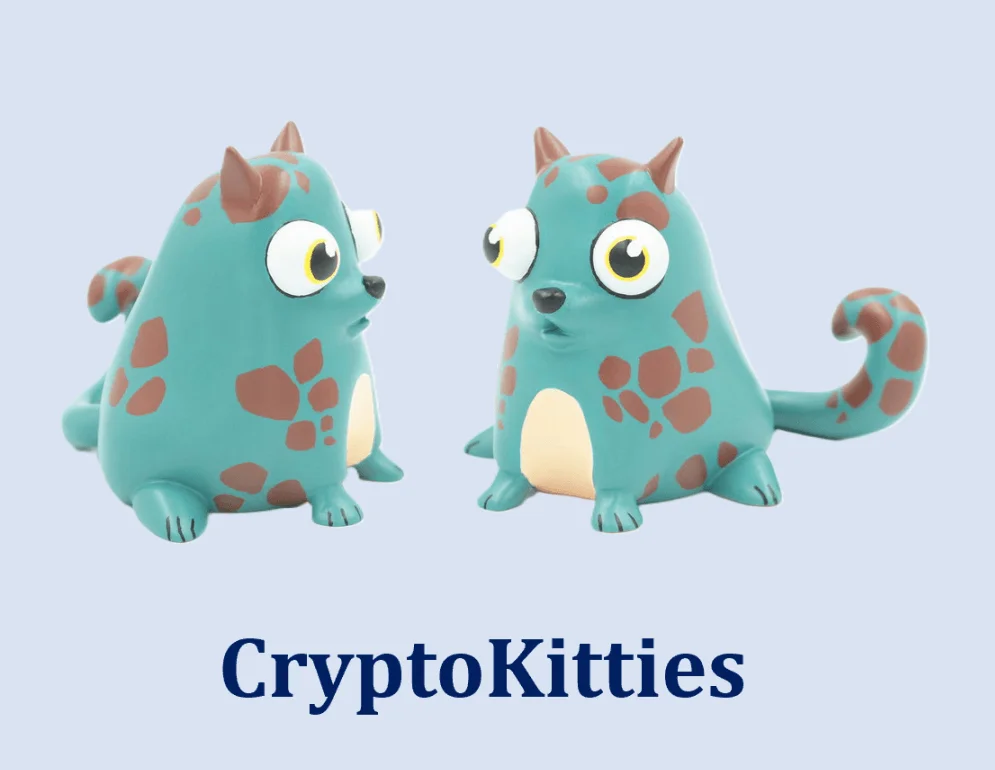
Fungible tokens are units that can be exchanged with each other as a medium of trade or currency exchange. Whereas non fungible tokens are digital assets representing distinct properties that validate individual item ownership and authenticity.
Understanding the Mechanics of Non-Fungible Tokens
To grasp the functioning of NFTs it is essential to delve into the underlying technology that powers them. Blockchain.
Representing Unique Assets, on the Blockchain
Introduction to Blockchain Technology
Blockchain technology is an distributed ledger system that records transactions across computers ensuring transparency, security and immutability. Each transaction or record called a block is connected to a chain of blocks creating an unchangeable record of information.
Exploring Asset Tokenization
Tokenization refers to the process of representing real world assets or digital creations as tokens on the blockchain. They take this concept further by encapsulating the qualities and ownership rights of an asset in tokenized form. By utilizing contracts, they can incorporate metadata, provenance details and other pertinent information, about the represented asset.
Advantages of Tokenization and Immutable Ownership
Tokenization offers advantages when it comes to asset ownership. Firstly, it allows for ownership where multiple individuals can own a portion of an asset. Additionally facilitate seamless and transparent transferability of ownership without requiring intermediaries or lengthy legal procedures.
The unchanging nature of technology guarantees that the ownership records of NFTs cannot be tampered, which ultimately strengthens trust and authenticity.
Types of NFTs
Non-Fungible Tokens come in many forms such as they represent one of a kind digital asset, on blockchain networks. These digital assets can encompass a range of content and functionalities. Let’s explore some categories of NFTs:
- Art NFTs: They capture artworks created by artists, including illustrations, paintings, digital sculptures and various other forms of visual art. By tokenizing their creations artists offer proof of ownership and authenticity to buyers.
- Collectibles: NFT collectibles are limited edition items that hold value and appeal to collectors. Examples include trading cards, virtual pets and in game assets. They span a range from figures and sports cards to fictional characters or special items within video games.
- Virtual Assets: The gaming industry heavily relies on NFTs to provide ownership rights and interoperability for in game assets. These assets can include characters, skins (customizations) weapons, lands (territories) and other virtual items that gamers can buy, sell or trade across games or platforms.
- Music and Audio: Musicians and creators utilize NFTs to tokenize their music compositions, albums, audio clips as exclusive experiences like concert tickets or access to premium content. These tokens serve as representations of ownership rights, royalties or access privileges, within the music industry.
- Domain Names and Virtual Property: Non-Fungible tokens have the ability to signify ownership of domain names or virtual property, in decentralized metaverses. These digital spaces serve a multitude of purposes such, as hosting events facilitating interactions and enabling commercial ventures.
- Tokenized Real-World Assets: NFT can also be used to symbolize ownership of real-world assets such, as properties, high end merchandise and collectibles. Tokenization allows for the division of ownership into fractions. It facilitates transfer of ownership, for these tangible assets.
- Utility and Access Tokens: Some of them provide access to exclusive communities, memberships, or services. These tokens offer utility beyond mere ownership, granting holders special privileges, rewards, or access to specific features or events.
- Digital Fashion and Wearables: NFT have opened up a world of possibilities in the realm of digital fashion. They allow users to own one of a kind virtual clothing items, wearables or accessories, for their avatars or virtual identities in the metaverse.
- Ticketing and Events: These tokens are revolutionizing the way we think about tickets for events, concerts, conferences and experiences. Now these digital tokens can serve as proof of ownership. Grant access rights to attendees.
- Educational and Content Based: Educational institutions and content creators are embracing the power of NFTs by tokenizing content, courses or learning materials. This innovative approach offers buyers ownership or access rights to these resources.

The versatility of NFTs allows for the representation and ownership of a range of physical assets. Their applications continue to expand across industries providing opportunities for creators, collectors, investors and various sectors to leverage technology for ownership validation, authenticity assurance and value exchange.
Issuing NFTs
Minting NFTs
The process of creating an NFT is commonly referred to as “minting.” Artists, creators or asset owners can mint their tokens by uploading their digital creations or special assets onto dedicated platforms or marketplaces specifically designed for NFT transactions. Minting typically involves connecting metadata about the asset. Such as its title, description and even accompanying multimedia files to the corresponding NFT. This metadata plays a crucial role in providing essential information, about the asset itself while also enhancing its overall value and desirability.
The Role of Smart Contracts and NFT Standards
Smart contracts play a part, in the development and management of NFTs. These contracts are designed to facilitate, verify and enforce agreements between parties involved. They follow standards such as ERC 721 or ERC 1155 ensuring compatibility and seamless integration across blockchain networks and marketplaces.
Trading NFTs
Once they are created, they can be traded among individuals. Blockchain networks enable peer to peer transactions eliminating the need for intermediaries. They offer creators and owners the chance to buy, sell or auction their assets creating opportunities for monetization and the establishment of a marketplace.
Applications of NFTs
They have had an impact, on various industries transforming how we engage with assets and presenting new avenues for ownership.
Collectibles and Art
NFTs in the Digital Art Market
They have ignited a revival, in the world of art, enabling artists to unleash their creativity market their works and safeguard them in ways. Artists now possess the power to tokenize their artwork guaranteeing its origin, uniqueness and authenticity. The blockchain acts as an ownership registry that safeguards artists rights while discouraging any form of copying or plagiarism.
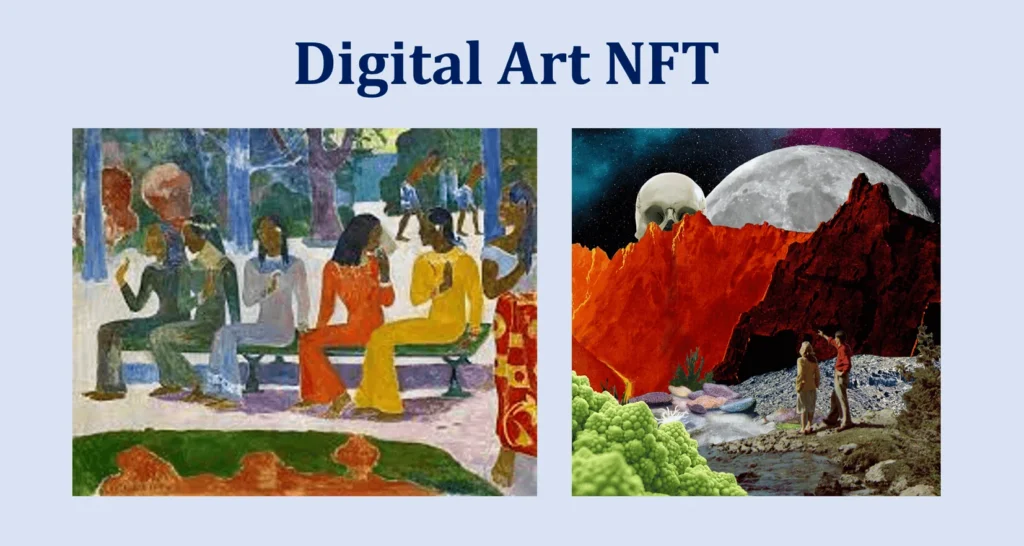
Pros and Cons of NFTs, in the Art Industry
The presence of these tokens, in the world of art offers many benefits. It makes the art market more accessible provides artists with revenue opportunities and allows creators to be rewarded through royalties. However, there are also challenges associated with NFTs in the art space including concerns, copyright infringement issues and the potential for market speculation.
Virtual Collectibles and Gaming
They have become a fit, for the world of collectibles and gaming. Whether its virtual trading cards or one of a kind in game items, NFTs allow players to genuinely own and exchange their assets. This exciting form of ownership adds a layer to the gaming experience and taps into our human longing, for possession and exclusivity.
Real-World Assets and Tokenizing Ownership
Tokenizing Real Estate and Property
They could potentially bring about a transformation, in the real estate sector by digitizing property ownership. By allowing for ownership and easy transfer, they have the potential to increase liquidity and make real estate investments more accessible to a range of people. Additionally, blockchain-based ownership records can streamline the cumbersome processes of title transfers and property transactions.
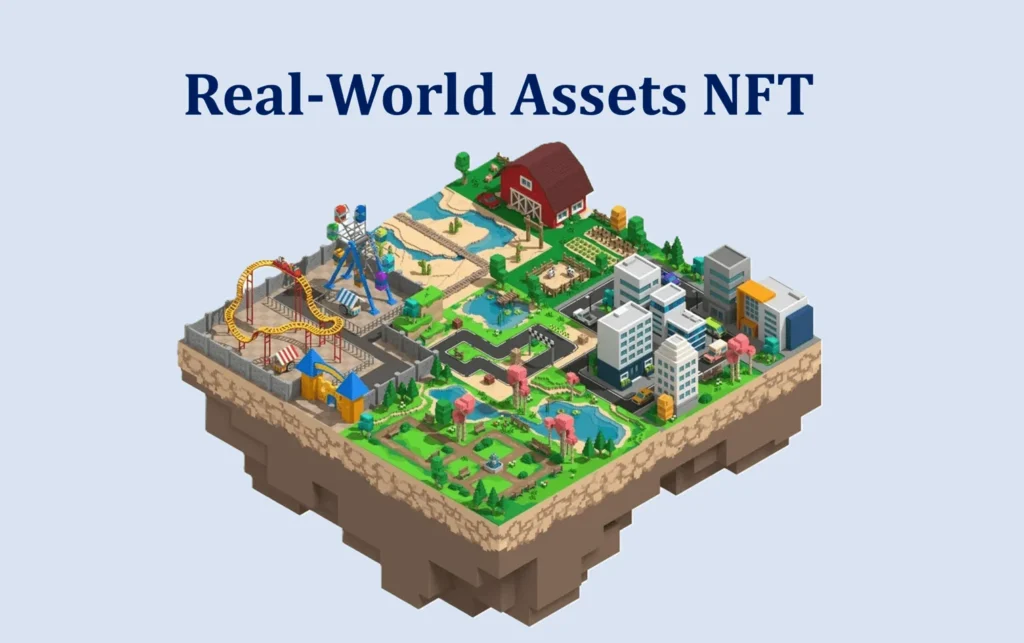
Enhancing Intellectual Property Rights
Intellectual property rights have frequently encountered difficulties in the era of advancements. Non-fungible tokens present a remedy by establishing a proof of ownership for creations safeguarding artists, musicians and writers against unauthorized usage or piracy. They enable creators to exert authority, over their intellectual property rights and capitalize on their endeavors.
Tokenizing Virtual Land and Virtual Reality Assets
As virtual reality technology advances, the concept of owning virtual land and assets becomes increasingly relevant. They allow individuals to acquire and trade virtual real estate, virtual reality assets, and even virtual identities within metaverses. This introduces a new dimension of ownership to the virtual world and opens up possibilities for personalization and monetization.
Virtual Identities and Personalization
NFTs for Personal Branding and Authenticity
They have the potential to transform personal branding and identity verification. Through tokenized personal assets like digital signatures, certifications, or social media presence, individuals can establish their online identity securely and authentically. NFTs enable verifiable proof of ownership and can enhance trust in the digital realm.
Decentralized social media and NFTs
The rise of decentralized social media platforms powered by blockchain technology intersects with the concept of NFTs. By integrating them, social media users can own and control their content, monetize their influence, and engage with their audience directly. They enable a fairer distribution of value within social media ecosystems.
Virtual Avatars and Identity Verification
They can also play a role in the realm of virtual avatars and identity verification. By tokenizing digital representations of ourselves, we can ensure authenticity and uniqueness, essential in virtual realms. They can provide a secure and decentralized way to verify identities and prevent identity theft or fraud.
The Impact of NFTs, on Industries and Society
NFTs have ranging effects that extend beyond industries influencing economies, culture and the legal landscape.
Economic and Cultural Effects
NFTs in the Digital Economy
They have the potential to redefine the value and ownership of assets in today’s economy. By introducing a trackable ownership system NFTs enable creators to monetize their work. Moreover, they can make financial markets and investment opportunities more accessible by dividing high value assets into fractions.
Empowering Artists and Creators
Traditionally artists and creators have encountered difficulties in monetizing their work while safeguarding their intellectual property rights. They empower artists, by providing a marketplace where they can directly sell their creations establish royalty arrangements and retain control over their assets. This newfound empowerment fosters and encourages innovation.
Challenges and Criticisms of the NFT
Although the NFT market presents opportunities it also faces challenges and criticisms. Here are some of the issues:
- Regulatory Concerns: One major challenge is the lack of oversight, in the NFT market, which raises concerns about fraud, copyright infringement and legal disputes. Without regulations in place, trust and security within the ecosystem can be hindered.
- Copyright and Ownership Complexity: Determining ownership and copyright of assets can be a complex task in the world of NFT. Issues arise when verifying the creator of an NFT or when there are disputes over intellectual property rights.
- Environmental Impact: The energy consumption associated with technology in relation to certain proof of work mechanisms used by some NFTs has sparked concerns about its environmental impact. The significant carbon footprint generated by networks used for minting NFTs is a subject of contention.
- Blockchain Congestion: Many blockchain networks supporting NFTs still face challenges when it comes to scalability. High transaction demand can lead to network congestion and increased fees making it less feasible for transactions and financially accessible for creators.
- Liquidity and Market Volatility: NFT markets can experience levels of volatility resulting in valuations. Their prices can vary greatly because of shifts in market sentiment, trends or the performance of cryptocurrencies.
- Ease of use and User Experience: For those in the NFT space it can be challenging to navigate understand wallet management, gas fees and the overall process. The absence of user interfaces and technical hurdles may hinder adoption.
- Token Compatibility and Standardization: The absence of protocols and interoperability, among NFT platforms can lead to fragmentation within the market. This fragmentation in turn hinders the transfer and utilization of NFTs across platforms or ecosystems.
- Security Risks: They are susceptible to hacking, phishing attacks and other security vulnerabilities. Vulnerabilities in contracts breaches in wallets and platform hacks pose risks to both creators and collectors potentially resulting in losses and compromised digital assets.
- Market Saturation and Quality Assurance: The rapid influx of NFTs across platforms has raised concerns about market saturation and the quality of offerings. With a plethora of NFTs distinguishing valuable and authentic projects from low quality or fraudulent ones becomes a challenging task.
- Long Term Value and Sustainability: Questions persist regarding the long-term value and sustainability of NFTs. It can impact the value of digital assets over time creating uncertainty for investors and creators alike.
Addressing these challenges is crucial for the maturation of the NFT space as gaining broader acceptance while effectively tackling concerns related to regulation, sustainability, security and accessibility. Instances of prices market manipulation as well as environmental concerns surrounding energy intensive blockchain networks have been observed within this market. These concerns highlight the importance of adopting behaviors and continuously improving the NFT ecosystem.
Environmental Concerns and Sustainability
Energy Consumption of Blockchain Networks
Networks that employ proof of work techniques for NFT transactions consume a considerable amount of energy. People are worried about the impact and carbon footprint caused by this energy consumption. As the NFT market continues to grow it becomes essential to find solutions that can help reduce energy usage and promote responsibility.
Addressing Carbon Footprints in the NFT Space
To address the concerns related to networks there are now initiatives aimed at minimizing the carbon footprint of NFTs. Some platforms are exploring energy ways of reaching consensus while others are committing to offsetting their emissions through various methods. Collaborative efforts are being made to create a environmentally friendly NFT market.
Green Innovations and Solutions, for the NFT Market
The evolving world of technology is paving the way for alternatives in the NFT market. Some blockchain networks are adopting energy consensus mechanisms like proof of stake which significantly reduces energy consumption. Furthermore, there are efforts to develop off chain storage and layer two solutions to lighten the burden on networks and minimize energy usage.
Legal and Regulatory Considerations
Understanding Intellectual Property Rights
As gain popularity it is crucial for regulatory frameworks to adapt to the evolving digital landscape. Existing intellectual property laws need to encompass the aspects of NFTs in order to safeguard artists, creators and owners from copyright infringement, counterfeiting and unauthorized usage. Establishing frameworks for defining ownership, licensing agreements and contractual obligations plays a role in creating a fair NFT ecosystem.
NFTs and Copyright Challenges
The convergence of NFTs and copyright gives rise to questions and challenges. While NFTs provide proof of authenticity and provenance they don’t inherently address copyright related concerns. The risk of use or infringement on copyrighted material remains a concern within the realm of NFTs. Addressing these issues requires an approach that content creators rights while ensuring fair access, to digital ownership.
Regulatory Frameworks and Consumer Protection
In order to safeguard consumers, it is crucial to establish frameworks that keep pace with the evolving and expanding NFT market. These regulations should prioritize transparency in transactions, combat fraud and market manipulation. Set guidelines for platforms and marketplaces. Finding a balance between fostering innovation and protecting consumers is vital, for the growth and widespread acceptance of NFTs.
The Evolution and Future Potential of NFTs
Non-Fungible Tokens (NFTs) have become extremely popular completely transforming the way we perceive ownership, authenticity and the digital economy. As they continue to progress the future of NFTs holds promise promising to revolutionize sectors.
- Expanding Use Cases: NFTs will go beyond their applications, in art, gaming and collectibles. Industries like estate, fashion, ticketing and education are expected to embrace NFT technology for purposes such as proving ownership history sharing ownership opportunities creating unique experiences and tokenizing valuable assets.
- Cross Platform Interoperability: New standards and protocols will enhance the mobility of NFTs across ecosystems. This will allow for transfer and utilization of NFTs on platforms leading to wider acceptance and increased liquidity.
- Ownership Benefits and Royalties: Smart contracts associated with NFTs can automate royalty payments to creators whenever these tokens are resold. This exciting feature ensures that creators receive compensation for their work while promoting remuneration for their contributions.
- Integration with Augmented Reality (AR) and Virtual Reality (VR): Combining NFTs, with AR/VR technologies will result in experiences like never before seen. Imagine properties represented by NFTs or digital wearables that interact within a metaverse or contribute to virtual economies—this integration will drive significant growth in these realms.
- Considering sustainability and the environment: There will be increased efforts to tackle the impact of networks that support NFTs. It will be essential to adopt eco consensus mechanisms and implement carbon neutral initiatives to address concerns, about energy consumption.
- Institutional Adoption and Investment: The adoption and investment of NFTs, by institutions, brands and enterprises will lead to innovation and credibility in the NFT space. Collaborations, partnerships and the tokenization of real-world assets will expand the range of applications for NFTs.
- Community Engagement and Social Impact: NFTs will enable community driven initiatives, charitable donations and projects with an impact. Creators and communities will have the power to support causes by leveraging assets raising awareness and funds.
- Regulatory Clarity and Market Maturation: As the NFT market matures regulatory frameworks will develop to address concerns related to copyright, ownership rights, taxation policies and consumer protection. Clear guidelines will promote trustworthiness and legitimacy within the ecosystem.
- Education and User Experience: Efforts to improve user education and enhance user interfaces will simplify the experience of working with NFTs for creators and collectors. User friendly platforms along with resources will encourage participation in a more accessible manner.
The future of NFTs holds potential for growth, innovation and diversification. With advancements, in technology coupled with evolving use cases that prioritize sustainability and inclusivity NFTs are poised to revolutionize industries while empowering creators and redefining ownership.
Summary and Frequently Asked Questions (FAQs)
Recapitulation of NFTs and Their Significance
Non fungible tokens (NFTs) are changing the way we think about ownership thanks, to the power of technology. Unlike currencies or cryptocurrencies NFTs represent digital items, assets or intellectual property that can’t be exchanged on a one-to-one basis. By using tokens NFTs allow for shared ownership record keeping and easy transfers.
To sum up NFTs are revolutionizing ownership by utilizing technology to create special and tradeable assets that can’t be replicated. These NFTs have a range of uses in areas like art, collectibles, real world assets, personal branding, virtual identities and more. While they bring cultural advancements along with progressions it’s crucial to consider factors such as environmental sustainability, legal frameworks and consumer protection to ensure that the growth of the NFT market is responsible and inclusive. The future of NFTs holds potential, for innovation creativity and a new way of looking at ownership.
Frequently Asked Questions (FAQs)
What gives NFTs their value?
The value of NFTs comes from their one-of-a-kind nature, scarcity, demand and how people perceive the worth of the asset or creation they represent. The value proposition of NFTs is boosted by the art market, collectibles and tokenization of real-world assets.
Is it possible to duplicate or fake NFTs?
NFTs themselves cannot be duplicated or counterfeited because of the nature of technology. However, it is crucial to ensure the authenticity and integrity of the underlying asset or creation that an NFT represents.
Are NFT transactions reversible?
Once an NFT transaction is recorded on the blockchain, it is typically irreversible. This irreversible nature provides security and immutability to the ownership record of NFTs.
How should I protect my NFTs?
Storing NFTs can be done through wallets that are specifically designed to hold and manage these tokens. It is crucial to use wallets and follow recommended practices for protecting keys in order to ensure the security of your NFT holdings.
What does the future hold for NFTs?
The future of NFTs is vast and diverse. With advancing technology and increasing adoption we can anticipate integration of NFTs, across industries, new applications for ownership of digital assets as well, as evolving regulations and frameworks to support the expanding NFT ecosystem.
